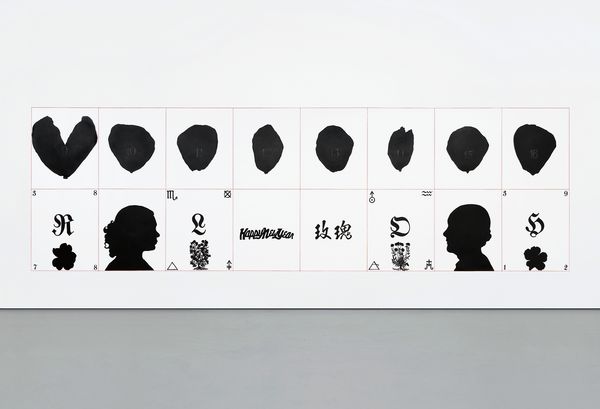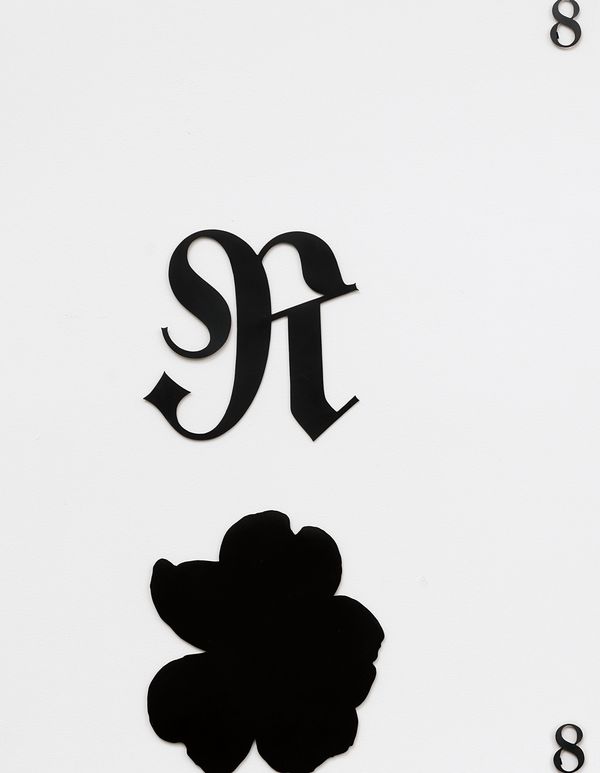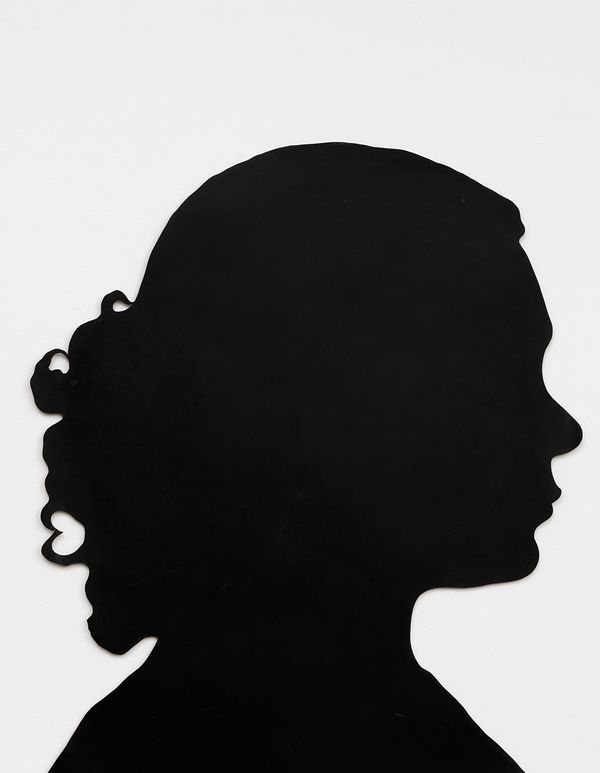Detail of Roberto Obregón Niagara II (Ele Erre y Hache O), 1993
Behind the apparent formal simplicity of Las Niagaras, a series made by Roberto Obregón in the last two decades of the previous century, lies hidden one of the most impenetrable productions of that peculiar conceptualism, which distinguishes a great deal of contemporary Latin American art. And it is impenetrable because his is an oeuvre that must be read from at least three distinct levels of meaning, all of them intimately united and interdependent.
The first one, which could be called "global," can be discerned from the fact of its belonging to those currents of thought which prioritize or claim to prioritize the idea over its taking material form. The second one, national in the tension (which does not exclude continuity in some aspects) between modern traditions and an intrinsic sense of progress. Finally, one that is strictly personal—even autobiographical—tied to the power of the internal dramas that his themes impose on him, his techniques and materials, his historical points of reference.

Roberto Obregón Niagara II (Ele Erre y Hache O), 1993
An element runs through his work and identifes him immediately: the rose, and more specifically, its dissection. Notwithstanding and despite the fact that the rose interests him in its symbolic arrangement of layers and its planetary presence, it is not, strictly speaking, a subject for him, but a symbolic principle and in the form of a dissection, a tool of language.
This means that thanks to this procedure of scientifc study and the peculiar way he has of using it that characterizes his work, the artist is able to deal with much more general and crucial problem sets, among which the concept of time as a cyclical reality and bound by accident, the singularity of every being and the biological fragility of life, affection and disaffection stand out. So, when its petals organize themselves in series that are absolutely regular, and each one of them has a number that identifes it, his pieces approach the opaqueness of what is tautological and of the more "orthodox" conceptualists.
If, on the other hand, one of these lineal structures is interrupted by the loss of one or several of its petals, the weight of the accident is conveyed. When, in very specific cases its petals are affected by the attack of an insect that wounds them, it’s about death and fragility that it speaks to us, especially when the rose comes from the garden of a friend who is victim of AIDS.
Thus, piece by piece, Obregón deals with the problems that trouble him, always from a starting point that is this absolutely singular fact: a dissected flower. This emphasizes how each individual is incommensurable and gives his work a political twist, through the employment of techniques that maintain a relationship with the original fower that one can call analogical, and even topological, with a profound meaning.
Piece by piece, Obregón deals with the problems that trouble him.

Niagara, 1953, Film Poster
In the specific case of the Niagaras, a group that is absolutely autobiographical, the affective dimension (and of course disaffection as well) is confronted, nourishing and lacerating his individual and family life. It is not by chance that the series takes the name of a movie with Marilyn Monroe (Niagara from 1953) whose title in Spanish is Torrente Pasional (Torrent of Passion). Obregón is informed by a structure both conscious and sought of the Large Glass by Marcel Duchamp. Just like in the Duchamp’s version, his Niagaras are in two levels, an upper one, the sphere of femininity, and a lower one, dedicated as is the case to the symbolic dialogue woven secretly between two personages, generally one feminine and the other masculine.
Detail ofRoberto Obregón Niagara II (Ele Erre y Hache O), 1993
They all come either from the family orbit and close friendships (his parents, lovers, female and male friends), or from the universe of artistic allusions and the Pop life that interested him, "all of them together and on the same level", among which the Venezuelan Alejandro Otero, the Frenchman Marcel Duchamp and the always admired Marilyn Monroe stand out.
All of them share the dissection of a rose which occupies the upper zone and appear to initiate a silent dialogue, about which we know nothing specific but are produced, framed and to a certain degree mediatized by that "architecture of signs" that humanity that has been created over the centuries to explain or make sense of our existence. In this Niagaras the personages that are in dialogue are the parents of the artist, Lelia Roque and Humberto Obregón, emphasizing the considerable importance of this work within this small series and the artist’s work in general.

Marcel Duchamp, The Bride Stripped Bare by her Bachelors, Even (The Large Glass), 1915-23. Oil, lead, dust and varnish on glass, 109 1/4 x 69 1/4 in. (277.5 x 175.9 cm), Philadelphia Museum of Art © Succession Marcel Duchamp/ADAGP, Paris/ Artists Rights Society (ARS), New York 2016.
Before Facebook, Obregón appears to have detected the social currents which confer upon the personal, even the intimate, a prioritized value in the contemporary societies, making them go public. In some ways, as in the times of Michel de Montaigne (and not precisely by chance), the work of this taciturn loner tells us the same thing, or something very close; that in times of doubt, when the dogmas hesitate and religion does not answer the most urgent questions of an individual (except for the dogmatists and the eternal extremists), the human intelligence finds itself doubtful and fragile, before the only reality that counts for us: culture, yes, that delicate network of signs with which we weave a welcoming home for our existence.
—Ariel Jiménez, Critic and Latin American Art Historian

